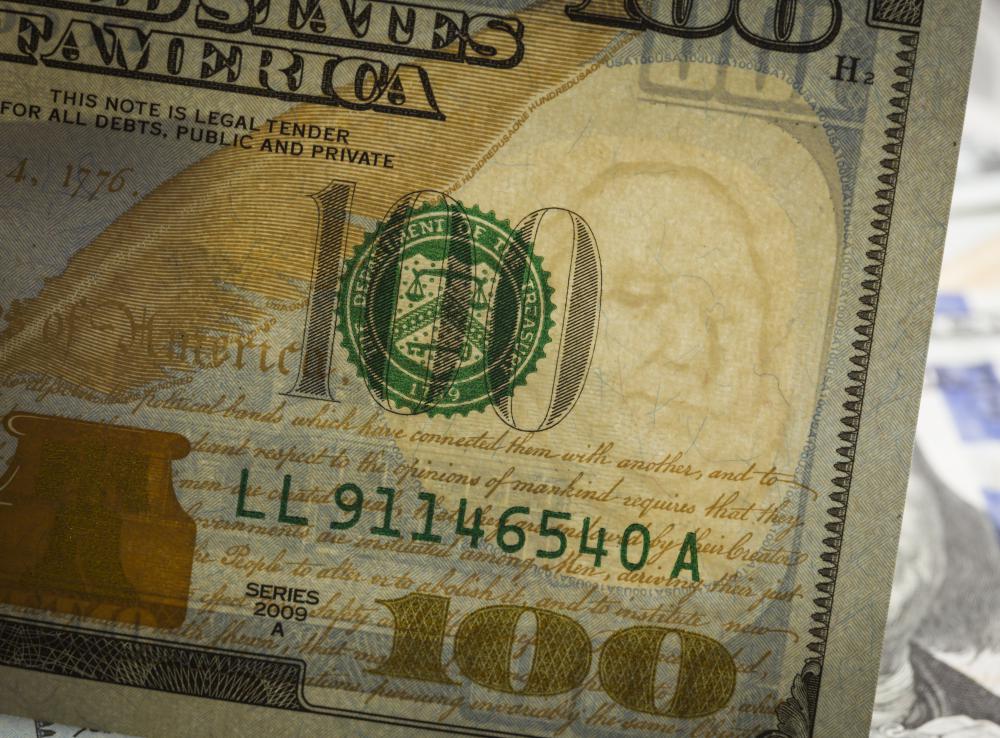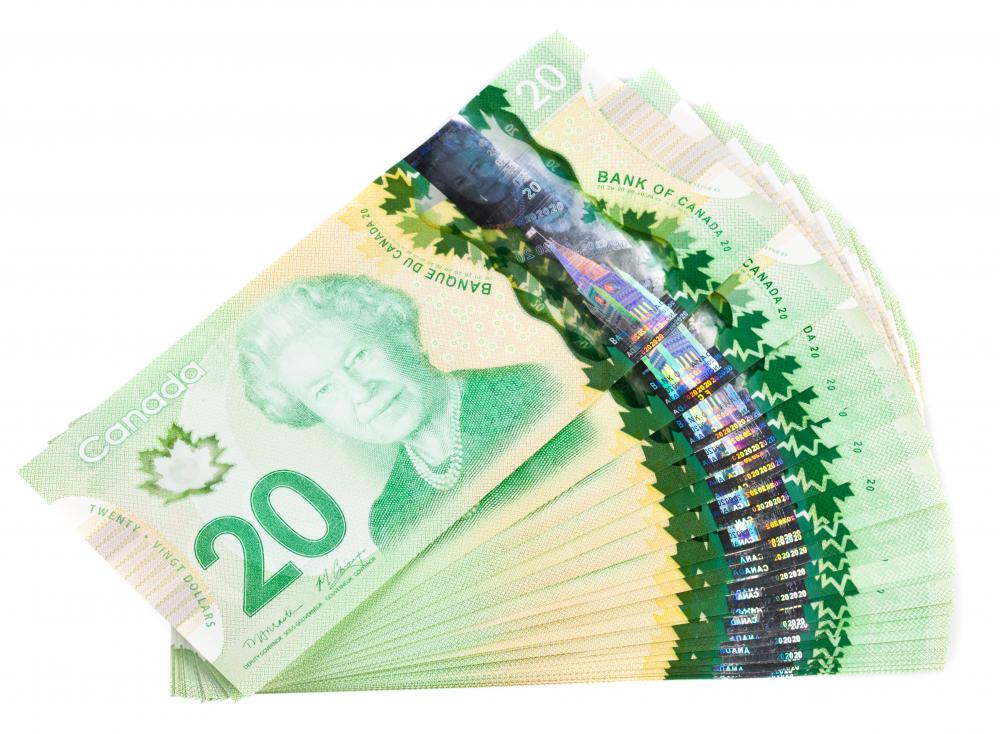At WiseGEEK, we're committed to delivering accurate, trustworthy information. Our expert-authored content is rigorously fact-checked and sourced from credible authorities. Discover how we uphold the highest standards in providing you with reliable knowledge.
How can I Tell if Money is Counterfeit?
Many businesses everyday lose money due to counterfeit cash. Counterfeiters constantly develop more sophisticated techniques in order to fool business owners and shop assistants. So how can you tell if money is counterfeit?
Notes may feel or look very genuine, but you may not be able to tell if money is fake with just a glance. Do not be embarrassed to check suspect notes in front of customers. It is in everyone’s interest that these notes are taken out of circulation. The notes should be thoroughly checked if they are suspicious.

There are a number of techniques that can be used to tell if money is counterfeit. People handle money everyday on a regular basis. We may not be aware of it, but our touch senses are often able to differentiate between real and counterfeit money. Real notes have minute fibers embedded in the paper; counterfeiters try and replicate this, but the fibers may not be embedded.

The paper of a counterfeit bill will also feel different than that of genuine bank notes. It may be more limp than the special paper that real notes are printed on. Another age-old way to tell if a bill is fake is to hold it up to a light. Watermarks and a thread running through the note should be visible when held to the light. Counterfeiters will try and replicate these, but the detail will typically not be as fine as the original.

A further way that will help you tell if money is counterfeit is the print quality of the note. Real bank notes have a crisp touch, even if they are old. The definition of the print will be very clear, with fine details. Fakes will not have such great detail; some parts of the note may appear blurred, and other parts may be missing altogether.
Serial numbers are another good way to spot counterfeit money. Genuine serial numbers are printed with the same distinctive color as the treasury seals. The numbers should be spaced precisely and have their own distinct styling. With counterfeit notes, the seal numbers may be a different color and the numbers may not be as even.

There are also many methods that genuine note printers use to foil counterfeiters. Holograms and foils are used more and more in bank notes. These types of bank note processes are very difficult to replicate. There are also ultraviolet machines available that can tell whether money is fake. These omit certain features shown in daylight and show other features not normally seen.

There are also detector pens that can be swiped across notes to tell if they are fake. They turn the swiped area of the note a certain color on genuine notes and another color on counterfeit ones. If you are passed a counterfeit note, do not give it back to the customer; delay the customer and inform the appropriate authorities immediately.
AS FEATURED ON:
AS FEATURED ON:















Discussion Comments
When I went to the Bank of Baroda branch at Jaipur, India, I went to deposit an amount of approx thirty thousand 10,000 and 500 notes. The cashier there declared one 500 note as a fake without putting it into any machine or using any appropriate methods for detecting fake notes.
Then, using his ball pen, put cross lines on both sides of that 500 note and returned it to me, telling that it is fake note. This 500 note was of the same paper and had all the necessary marks as the others given to him for deposit. I told him to use appropriate methods to properly check that it is fake, but he would not.
Looking at the note, I was not convinced that it is a fake note. The cashier might have harassed me as I saw several times while visiting that bank branch that the behavior of that cashier was not so good. Now, the question comes about what to do with this 500 note, and where and how to check that it is a fake note?
Most counterfeit bills don't have cotton in the paper. To check this buy money marker from office max "no cotton" black mark. Check for a security strip. Wet the tips of your fingers and rub the bill. If the color bleeds, it's fake.
All new printers leave micro number codes in ink. Under a microscope, the feds get the number and track back to a printer purchase. All printers have different numbers left in printout. so money markers, feel an dcolor bleed test is about all there is.
@ Georgesplane- That is an interesting viewpoint. An increase in foreign counterfeits combined with more domestic busts does tell me that enforcement and detection of counterfeits has become very good in the United States. The total amount of counterfeit currency in circulation has declined over time though. When the Treasury Department first established the Secret Service to root out counterfeits, almost 50 percent of all American currency was counterfeit (this was shortly after the end of the civil war). Imagine the economic uncertainty that would exist today if half of all USDs in circulation were counterfeits.
@ Alchemy- I would like to pose a question to you. What if the reason more domestic counterfeiters are caught is that domestic counterfeits are often of lower quality than foreign counterfeits? It is hard for anyone in the states to slip under the radar and produce high quality counterfeits.
I read an article a while back that said many foreign counterfeits are almost identical to real currency, meaning that the counterfeit operations are huge with millions of dollars in equipment. It would take a sophisticated organization (small governments, organized crime, terrorist organizations, or drug cartels) with lots of money to run an operation like this. This could explain why most foreign counterfeits come from Colombia, Italy, Hong Kong, the Philippines, and Thailand. The Secret Service also suspects North Korea has a large counterfeit operation and passes their counterfeits through one of these hot spots.
Counterfeiting has become big business in the last decade. Most counterfeit money is produced right here in the United States, although the counterfeit money produced overseas is often what receives the most media attention.
The ratio of domestic counterfeiting operations discovered by the secret service versus international counterfeiting operations is about seven to one. In fact, every year the government seizes more counterfeit money and most of the bills are larger denominations. Advancements in technology have made it easier for counterfeiters to pass off fakes. This is probably why our bills change every five years or so, and this is why t is so important for everyone to try to detect counterfeit money.
Post your comments